Harnesses for dogs: description of the species, how to select the size and train the dog?
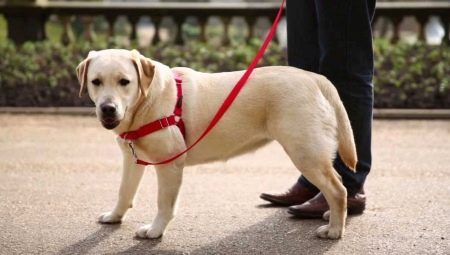
A harness is one of the essential accessories for a dog. Dog breeders, having appreciated its ease of use, are increasingly replacing the collar with it when walking their pets, since it holds the dog well and reliably during a walk.
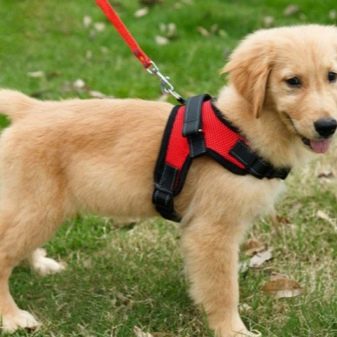

Why do you need harnesses?
The harnesses were originally used in dog sleds and are still in use today. The design of this harness allows dogs to feel comfortable while running: the harness distributes the load equally and does not interfere with the dog's breathing. Since then, the harnesses have undergone some changes, not only in appearance, but also in purpose, and now they are used for other purposes.
The advantage of a harness over a collar is undeniable. Pulling on the leash causes the collar to press on the neck, which can lead to poor blood flow or injury to the lymph nodes. In addition, strict collars and strangleholds can cause great damage to the cervical vertebrae and musculature, and even cause throat pinching.
Experts have also found that the consequences of constant sharp pulling of the leash during walks can be various diseases of the back, neck and throat. All this can be avoided by using a harness.
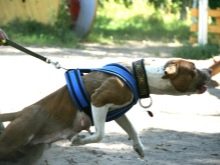
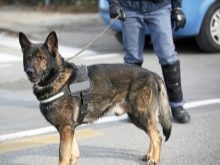
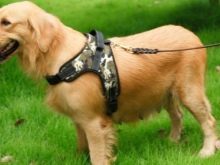
The harness in the classic version consists of 2 belts connected and fixed at 4 points that encircle the chest (between the front legs) and part of the dorsal region. The leash is not attached to the neck, like a collar, but to the withers. This design allows the dog to breathe and move freely.
The harness, evenly distributing tension on the dog's body, provides no pressure on the animal's neck, creates freedom and comfort of movement. In addition, it is easier for the owner to guide the dog.
This special harness not only allows you to keep your dog under control while walking, but also helps to develop physical endurance and strength. A harness is also necessary if a dog cannot wear a collar. So pugs, whose neck has a larger volume than the head, cannot wear a collar, since it jumps off the neck.
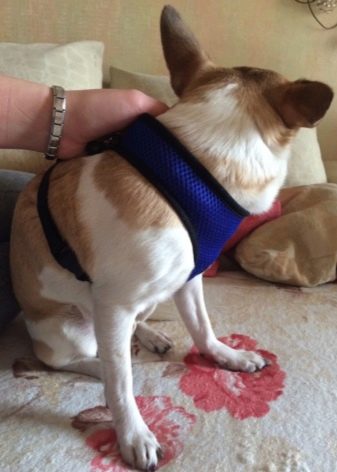

Dogs with a specific flattened face often suffer from breathing problems. This applies to Pekingese, Japanese Chin and other breeds. Wearing a collar will only make the problem worse. A harness is the best way out.
It is also necessary to use this equipment if the pet is very active and constantly breaks off the leash during a walk, which can also lead to injury.
The purpose of the harness can be different: for walking, for transporting goods, for racing in a harness, for training a dog's muscles. Accordingly, there are different types of harnesses.
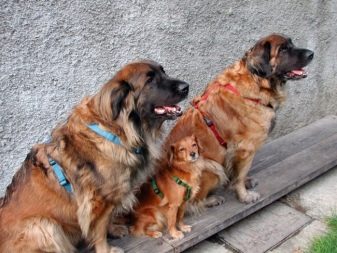
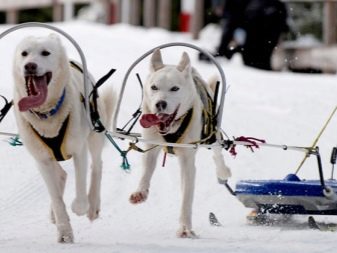
Views
First of all, the purpose of their use influences the species diversity of shleiks. By appointment, they are of the following options.
Walking harness
The design of this model provides for the attachment of the leash ring at the withers of the dog. Such ammunition is used for daily walks. Walking harnesses can be of different sizes: for dogs of large breeds, medium and small. The harness for large dogs should have an additional felt layer - this reduces the pressure on the animal's chest.

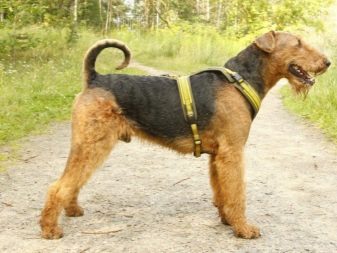
Riding model
This type of dog harness has been used in dog sledding by northern peoples in everyday life for centuries. As a result, the most convenient design was formed. The difference between a riding harness and a walking harness and other types is that its straps are located so that they do not put pressure on the shoulder joints, and it has additional attachments for connecting to the harness.
Such harnesses often have special devices that protect the ammunition from weaving and tangling. Nowadays, these models are used in dog sled racing competitions.
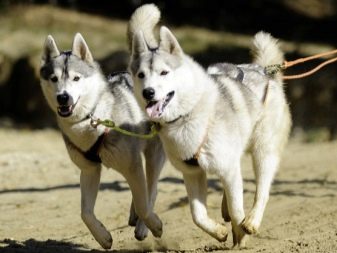
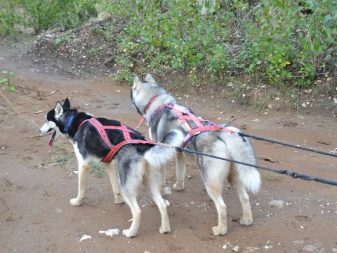
Traction (towing) harness
Designed for large dogs. Its distinguishing feature is the very high strength of the belts and fasteners.
In addition to steel leash rings at the withers, it is equipped with towing rings on the sides. The model allows you to transport goods and drag small vehicles in tow: baby sleds, strollers and carts.
These models are also used in competitions such as skijoring (towing a skier by a dog), bikejoring (towing a cyclist by a dog), and canycross (running a person and a dog together). They are also used for service dogs such as guide dogs.
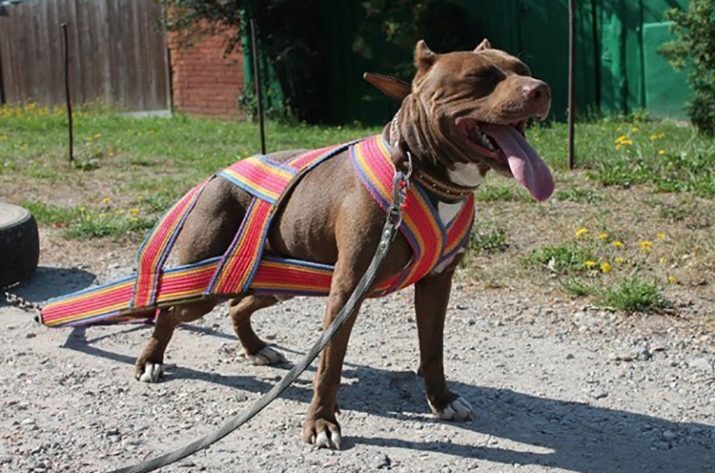
Harness with weights (cargo)
This specific variety is used to develop the muscular system and strengthen the musculoskeletal system of the animal. The model has separate pockets where weights are placed.
Wearing such equipment leads to training and strengthening of the dog's muscles, to the formation of beautiful and powerful muscles, a classic stance, which is especially necessary when preparing a pet for a competition.
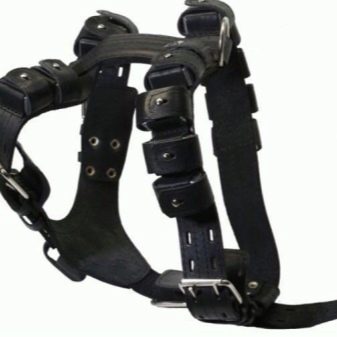
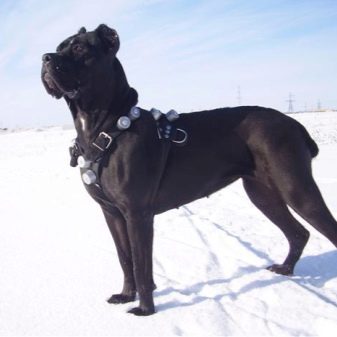
Harness vest
This type is used for walking small decorative dogs (Chihuahuas, Spitz and others) with short hair. This model, insulated and soft, protects small pets from hypothermia.
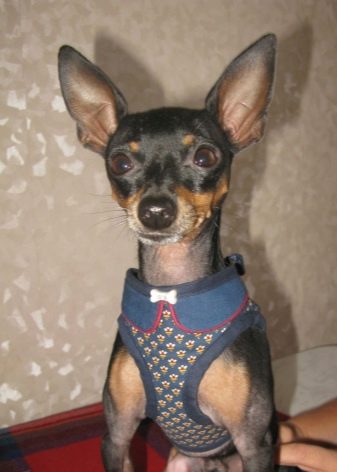
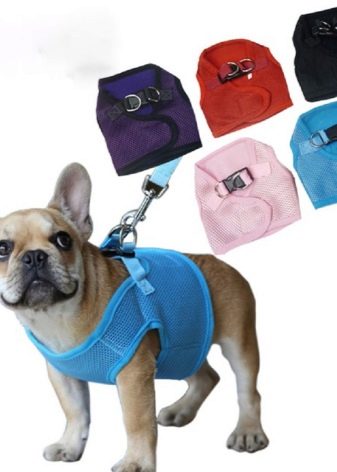
Corrective model
These types of equipment can have two purposes, one of which is to correct the behavior of the animal. This model safely controls the behavior of such a dog, which has a habit of pulling on the leash tightly. In it, the fastening ring for the leash is located on the chest. This leads to the fact that, with strong tension on the leash, the pet by inertia turns 180 degrees to face the owner.
Another purpose of corrective models is to be used to correct the figure and correct the development of the spine.
It is important that such harnesses exactly match the dimensions of the dog and sit tightly on it.

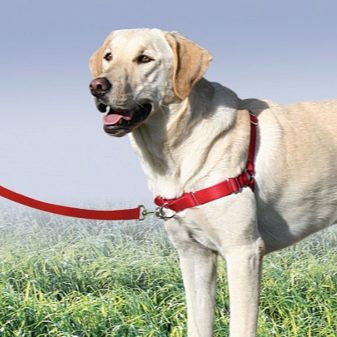
Medical types of harnesses
Designed for dogs with partial paralysis or other injuries. Such models are made in the form of a vest that covers almost the entire body of the animal. The fastening nodes on them are closer to the hind legs, and not at the withers.


Puppy harness
Usually, light, soft, but strong enough materials are used for this type, so as not to cause unnecessary stress on the still unformed musculoskeletal system of the baby. The equipment gives the puppy freedom of movement and at the same time allows you to fix the puppy during sudden movements.
but it should be borne in mind that this ammunition cannot be used for a small puppy... You can only walk in a harness when they reach 9-10 months of age. It was at this time that the formation of its skeleton and the strengthening of the muscular system took place. Earlier application may cause bowing of the forelegs.
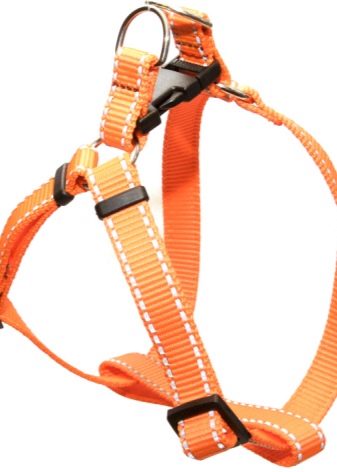
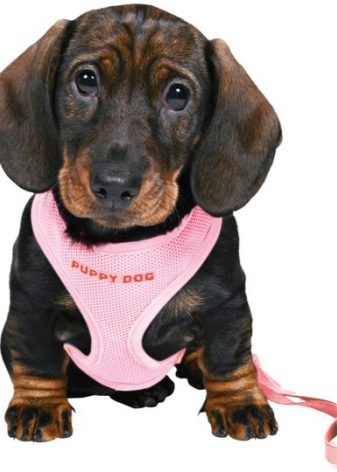
Exhibition models
Used during dog shows. They have a beautiful decorative appearance: the belts are made narrower than usual. They have a lot of fancy decorative adornments, which in everyday use often just get in the way of the dog. Harnesses for large dogs often have a special device that prevents the dog from pulling on the leash.

Harness with handle
These models are most often used for walking dogs of large breeds, since the handle is an additional and reliable means when it is necessary to hold the dog. They are also convenient to use for animals with injuries or for weakened elderly pets: the owner, holding the dog by the handle of the harness, thereby lightens the load and makes the pet easier to move.
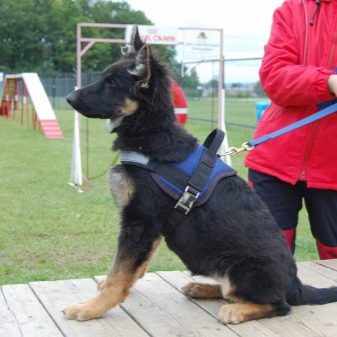
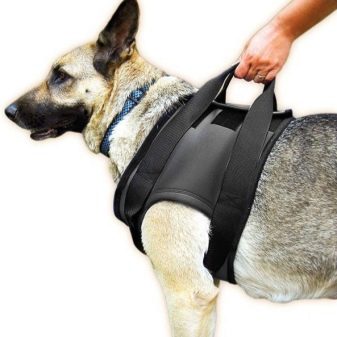
For the manufacture of this ammunition, different materials are used.
- Synthetic. They are considered to be the most practical. Synthetics are resistant to moisture, does not freeze in the cold, has high strength, durability, is easy to wash and does not shrink when washing.
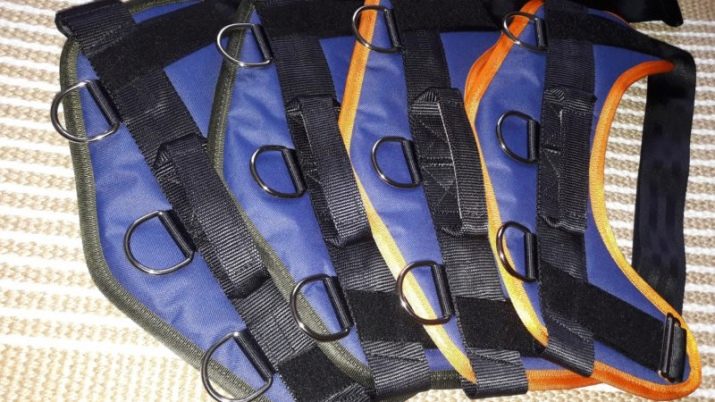
- Tarpaulin. Tarpaulin models are the cheapest budget option. However, they wear out much faster, absorb moisture, and are much more difficult to wash, and besides, they do not wash well and take a long time to dry.
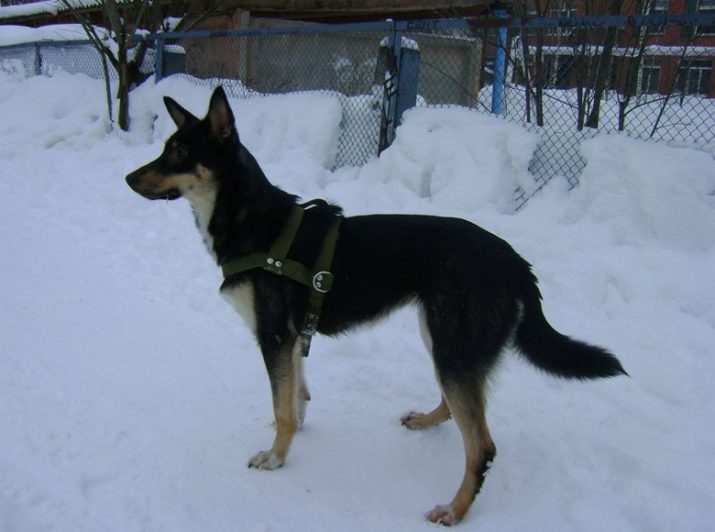
- Leather harnesses have a beautiful look, but are very expensive. Leather models have such disadvantages: when wet, the skin becomes less elastic, is able to stretch and, as a result, is deformed. After drying, it becomes coarser, and cracks appear on the surface.
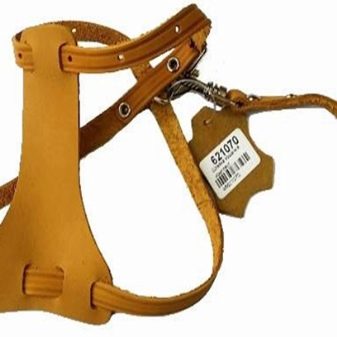
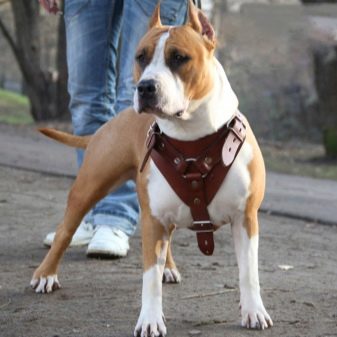
What to look for when choosing?
In order to choose the right equipment, certain nuances must be taken into account.
Model quality
The material used for the manufacture should not only be durable, but also light, soft and smooth, as well as wash well and dry quickly. It is undesirable to purchase models made of hard materials such as tarpaulin and leather. They are not comfortable to wear: they restrict movement by digging into the skin.
A rough cut with strongly protruding seams and rivets on the inside is also unacceptable: this leads to chafing and irritation of the skin.
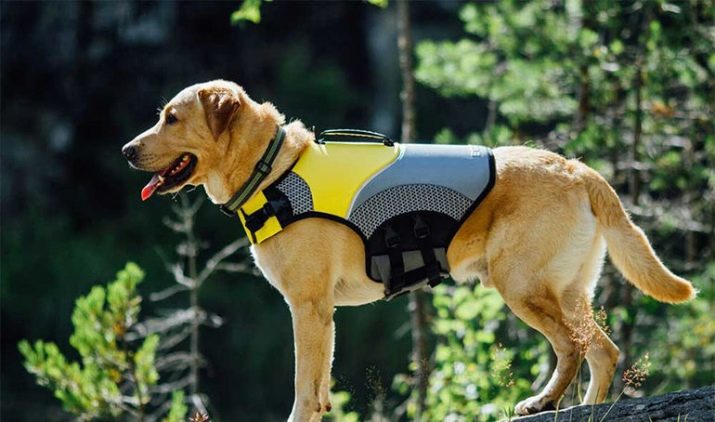
For small and miniature dogs, the material of manufacture is not so important - it can be anything. Models made of velor, nylon and other soft materials are usually recommended, preferably with a handle, since if necessary, a small pet has to be taken in your arms.
For large dogs, it is preferable to purchase synthetic models: they are strong, durable, low maintenance and relatively inexpensive. You can only walk your dog in leather harness in dry weather. In the rain, natural leather gets wet, and when it dries, it becomes rough.
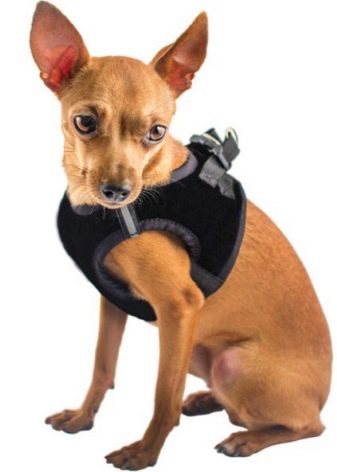
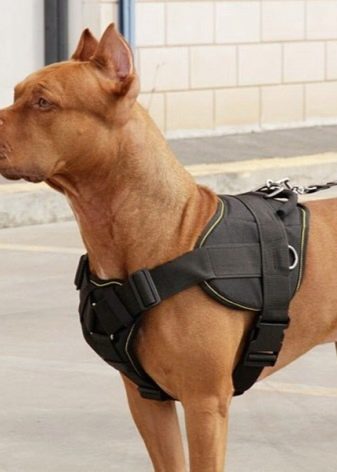
Particular attention is paid to the strength of the fastening elements, their location on the harness.When choosing equipment for large and medium-sized dogs, it is better to give preference to those models where the fasteners will be metal, and plastic fasteners are acceptable for small breeds.
The place of fixing the harness and the carabiner is also important: it should be on the back, not on the chest (unless it is a special corrective model). All fasteners should not press on the animal's body, rubbing it and causing discomfort. During movement, they should not interfere with the pet.
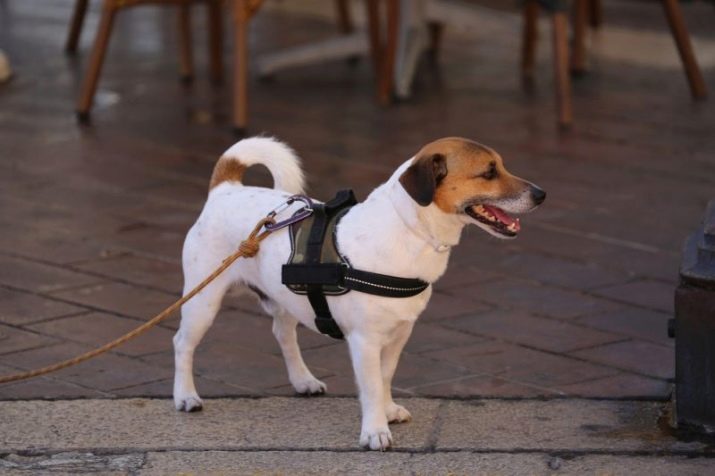
Model size
The harness must fully match the dimensions of the pet. If the model sits too tightly on the animal, then when it is moved, it will rub the skin, and bald patches may form on the coat. If the harness is too big for the dog and sits very spaciously, then the necessary and reliable fixation of the pet will not be provided.
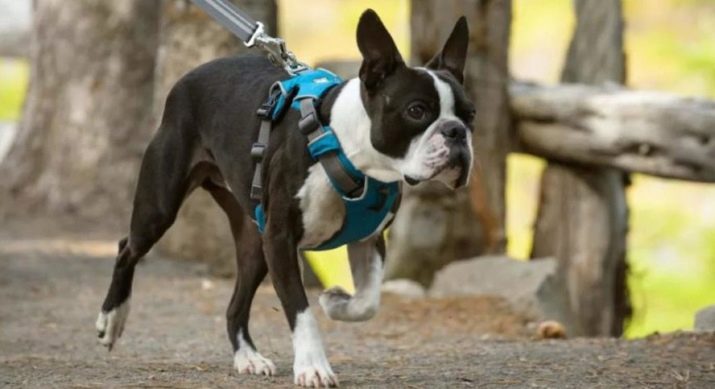
Harness shape
It is very important that the front strap is not in the neck area. The front part of the harness should correspond to the anatomical structure of the dog's chest and have a Y-shape. This shape, when the leash is pulled, does not exert pressure on the animal's neck.
The upper part should be in the form of the letter H: it prevents the harness from being lifted around the neck when the leash is pulled, and at the same time provides freedom of movement. The straps should be connected at the point of convergence of the shoulder blades and the beginning of the sternum. The back strap must have a secure fit.
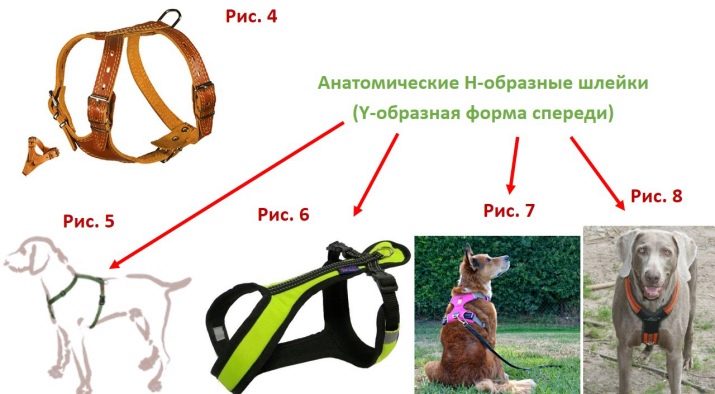
Front harness straps
Should be located at a distance approximately equal to the width of the palm from the pet's shoulder. Tight-fitting straps will rub your armpits, hindering movement and creating discomfort. In addition, they should be wide enough: narrow ones will dig into the dog's body.
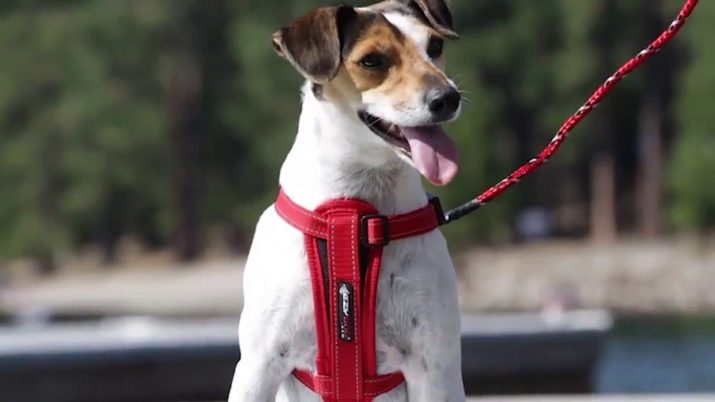
Number of fasteners
Models with a large number of fasteners can be used first for a puppy, and then for an adult dog as it grows up. All elements of such ammunition are adjusted to the individual dimensions of the pet.
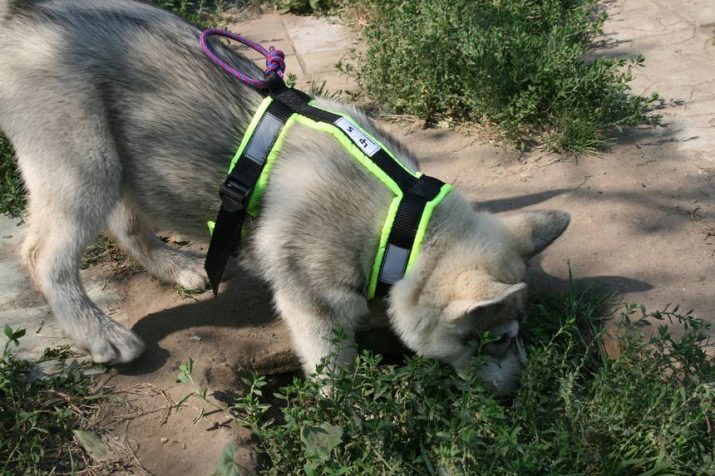
Dog size and weight
They also affect the choice of this equipment. For dogs of large breeds or with a restive disposition, you need to choose the most durable harnesses with reliable fasteners: carabiners and fasteners made of steel, and the rings are welded.
The purpose of use should also be taken into account: the choice of one or another type of harness depends on this.

How to choose the size?
The correct size guarantees complete comfort for the animal. Therefore, it is very important to correctly determine the size of the harness. The easiest way to find the right ammunition is if the dog is present at the time of purchase and the harness is simply tried on. When buying equipment in the absence of a pet, you need to use the measurements taken from the dog.
The dimensions of this ammunition are indicated in a special plate, but in order to use it, you need to know all the measurements of the dog.
- Chest volume. It is measured at the widest part of the sternum, which is directly behind the forepaws of the animal. To the resulting measurement result, add 1 cm for small and 2 cm for large dogs.
- Neck volume. It is measured where the collar is usually located - in the lower part of the neck. When measuring, the centimeter must pass through the following points:
- the anterior point is the keel (the bone that protrudes under the neck of the animal);
- back - not far from the head at the end of the shoulder blades;
- back length is the distance from the withers of the dog to the root of the tail.
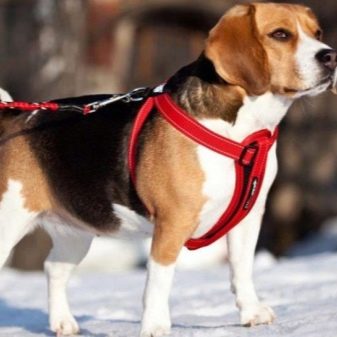
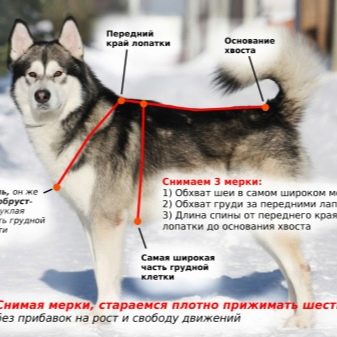
To select riding and other special models of harnesses that have their own design features, they make slightly different measurements:
- length from the keel to the anterior edge of the shoulder blades;
- length from keel to hind edge of forelegs;
- length from the front edge of the shoulder blades to the last rib;
- back length from withers to root of tail.
While taking measurements for a more accurate measurement, it is necessary to firmly press the pet's fur.
In the table, each size corresponds to a certain measurement of the girth of the chest, neck and back length. It also indicates the possible weight of the dog.So, size S corresponds to the following parameters: chest volume - 29 cm, neck girth - 19 cm, back length - 23 cm and is designed for a dog's weight in the range of 1.4-2kg. In addition, the breed of dogs that may be suitable for this size are indicated.
Size XXS is perfect for Miniature Pinschers and Chihuahuas. The XS harness can be used for pugs. For the largest dogs, such as the St. Bernard or Great Dane, the harness size XL is suitable. For Shepherds and Rottweilers, size L may be suitable.

With the correct harness, the palm should pass freely under the straps. If the hand advances with difficulty, then such ammunition is small for the pet.
Usage Tips
At first, it can be difficult to put on a harness on a dog. Mobile or stubborn, she resists in every possible way while putting on this ammunition. And it happens that she is simply afraid of an unknown new thing. Therefore, she should be accustomed to new equipment. This will help such tips.
First, you need to give your pet the opportunity to get acquainted with the new ammunition: let the dog sniff it first. Show your dog that this item is safe. Then, picking it up, lightly rub it on the dog's head, neck and back. After that, you need to let the dog sniff the harness again.
If the pet has calmed down and does not show fear, it should be praised and encouraged with a treat. After that, you can start dressing the equipment. If the dog does not dare to pass its head through the corresponding hole, you need to place a hand with the treat there, and the pet, reaching for the treat, will stick its head into it on its own.
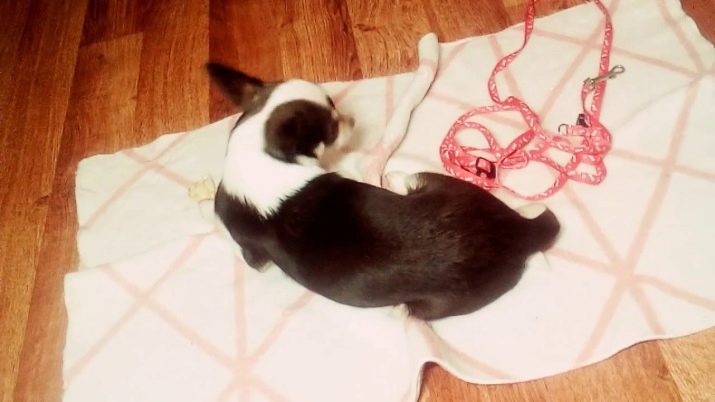
To place the paws of the animal in the desired holes, it is required, having first sniffed the treat, raise your hand slightly upward. While the pet stands calmly, attracted by the treat, quickly rearrange one of its paws into the corresponding hole. After that, you should definitely treat the dog. Then do the same with the second paw.
So, by training the dog each time, you can accustom him to a new type of equipment, and she will allow you to put it on without resistance.
A dog is considered accustomed to a harness if it allows it to be put on calmly, does not try to free itself and calmly walks in it.

There are different methods of putting on a regular walking harness. The first method is suitable for large dogs. Step-by-step instructions include a specific procedure.
- First, you need to study the diagram of its design, determine which side it needs to be worn so that the soft surface adheres to the body. Then check how the locking elements and the lock work.
- Then you should fix the pet. To do this, you need, slightly squatting, grab your legs and knees around the body of the animal in the area of the hind limbs. If the animal does not stand still, then you need to lightly press down on its back.
- Holding the harness in your right hand, hug the pet by the chest.
- Taking the dog's left front paw with your left hand, you need to raise it, and then bend it at the elbow joint. It is advisable to do this without the use of force.
- The paw must be quickly threaded into the left hole between the belts: two circular and one transverse.
- Then you need to move the equipment higher to your chest, while simultaneously picking up it with your left hand.
- Similar actions are carried out with the right paw of the dog: the right hand raises the right paw, bends it at the elbow joint. Then you also need to thread it into the right hole of the equipment.
- After that, pulling the harness higher, you need to snap the lock located at the top of the withers.
- Now you need to check whether the ammunition is worn correctly and whether the straps are messed up. You also need to make sure that the harness sits well on the dog, if necessary, loosen or, conversely, tighten the belts using the clips.
- Last of all, the leash is attached to the rings at the withers.
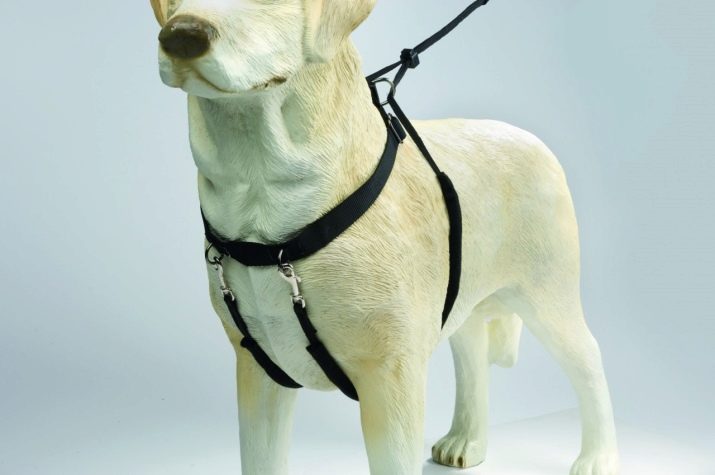
For medium-sized dogs, a different method of donning the equipment can be used. The procedure will be as follows.
- It is necessary to consider, assemble and prepare the equipment: test the operation of the locks, straighten the belts.
- The equipment should be spread out on the floor and well spread out. Then determine which straps cover the chest and which the torso.
- The pet must be brought to the equipment on the floor.
- The next step is to get the dog to move the forelimbs into the appropriate holes in the harness. To do this, you need to alternately rearrange the left paw with the left hand to the left, and then with the right hand - the right paw into the right hole in the ammunition.
- Quickly picking up the ammunition with both hands, pull it up and click the lock.
- After that, you need to inspect the belts, the degree of their tension and check the reliability of the fixing units.
- Attach the leash to the rings at the withers.
This method can also be used for small dogs. After the ammunition is laid out and straightened on the floor, you do not need to bring the dog up to it, but you should take it in your arms and place it so that its front paws are in the corresponding holes of the harness. Then you need to carry out the same steps as when dressing a medium-sized dog.
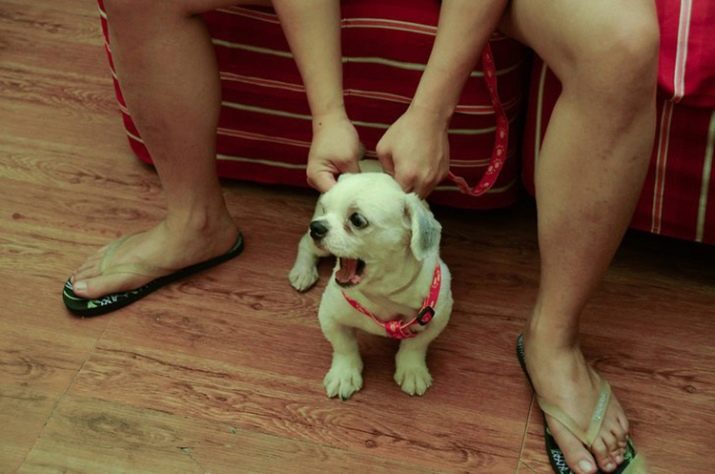
It is somewhat more difficult to put on a riding model with two holes - for the head and for the torso. The following actions should be taken:
- first you need to go through all the straps and fixing elements;
- then you should sit behind the pet and, holding his body with his legs in the area of the hind limbs, stick the dog's head into the annular hole for the sternum;
- straps must be straightened and the holes for the limbs must be conveniently positioned;
- then, lifting the right paw of the dog and bending it at the elbow joint, thread it into the right hole;
- the connecting strap must be stretched under the left paw, and then fix the ammunition lock on the side;
- check the reliability of fixation, and then you can fasten the leash to the ring.
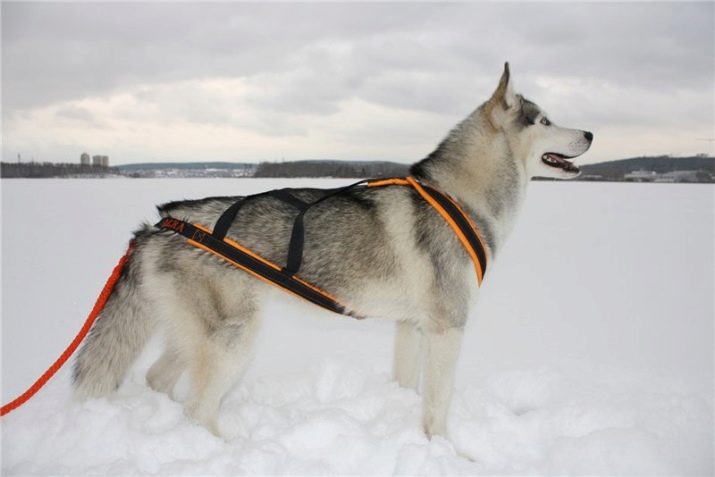
In a different way, they put on a harness-vest with a fastener on the sternum:
- first you need to fix the body of the dog;
- then you should put the harness on the back of the animal;
- the next step is to alternately thread the dog's front limbs into the corresponding holes in the ammunition;
- then you need to quickly fix the harness on the chest, while continuing to hold the pet;
- in the last turn, the leash is attached to the rings on the back.
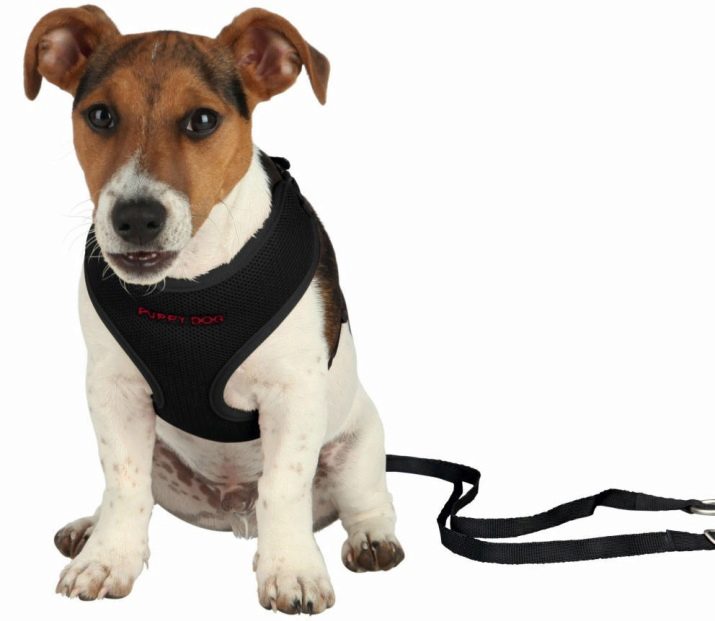
It is important to note that dog handlers do not recommend using the harness on a daily basis and recommend periodically replacing it with a collar.
For more on the features of dog harnesses, see the next video.






































